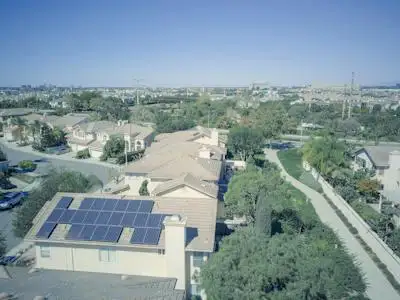The Two Worlds of Solar:
To understand the fate of your solar roof during a power outage, we must first differentiate between the two main types of solar energy systems: grid-tied and off-grid.
Grid-Tied: The majority of residential solar installations fall under this category. These systems, like power-sharing neighbors, send excess solar energy generated back to the grid, earning you credits or reducing your bills. However, they rely on the grid for stability and safety.
Off-Grid: These self-sufficient systems operate independently, storing excess energy in batteries for nighttime or cloudy days. They offer complete energy independence but require significant upfront investment and careful system design.
The Grid-Tied Dilemma:
Now, let's rewind to the power outage scenario. When the grid goes down, a safety feature kicks in for grid-tied systems – the inverter, the brain that converts sunbeams into usable electricity, automatically shuts down. This is crucial for several reasons:
Protecting Linemen: Utility workers repairing downed lines face immense danger if rogue solar energy suddenly surges back into the grid. The automatic shutdown ensures their safety.
Preventing Islanding: If your system kept generating power and feeding it back to a section of the downed grid, it could create an "island" with unpredictable voltage fluctuations, posing risks to equipment and personnel.
So, with the grid down, your solar panels, sadly, become dormant sentinels on your roof, unable to power your home. But, there's a silver lining...
Battery Backup to the Rescue:
Enter the solar battery, the superhero of power outages. When paired with a grid-tied system, batteries act as energy sponges, soaking up excess solar production during the day. When the grid flickers off, the battery becomes your home's knight in shining armor, drawing upon its stored energy to keep essential appliances running (think lights, refrigerators, medical equipment).
The size and capability of your battery bank determine the duration and extent of your blackout immunity. A small battery might keep your phone charged and the fridge humming for a few hours, while a larger one could power your entire home for days.
Off-Grid Oasis:
For those who have opted for the off-grid path, power outages are a mere blip on the solar screen. Their batteries, already brimming with sunshine-sourced energy, seamlessly take over, ensuring uninterrupted electricity flow. Off-grid solar offers the ultimate energy independence, but it comes with its own set of challenges, like higher upfront costs and complex system design.
Beyond Batteries: Alternative Solutions:
While batteries are the most common backup option, other solutions are emerging:
Automatic transfer switches: These devices seamlessly switch your home from grid to battery power during an outage, ensuring a near-instantaneous transition.
Microgrids: Communities or neighborhoods can pool their solar resources and batteries, creating mini-grids that offer greater resilience and power sharing capabilities.
The Future of Solar and Power Outages:
As solar technology continues to evolve and battery storage costs decrease, the dependence on the traditional grid for backup power will likely dwindle. Imagine entire neighborhoods powered by interconnected solar roofs, with robust battery systems acting as safety nets against blackouts. This vision of decentralized, resilient energy grids is not a distant dream but a potential reality on the horizon.
In Conclusion:
While a power outage can momentarily disrupt the harmony between your solar roof and your home's energy needs, it doesn't have to plunge you into complete darkness. By understanding the different types of solar systems and exploring backup options like batteries and smart technologies, you can ensure that your sunshine keeps shining, even when the grid takes a break. Remember, a well-designed and equipped solar system can transform power outages from unwelcome inconveniences into mere bumps on your journey towards energy independence. So, embrace the sun, prepare for the shadows, and let your solar roof guide you towards a brighter, more resilient future.

